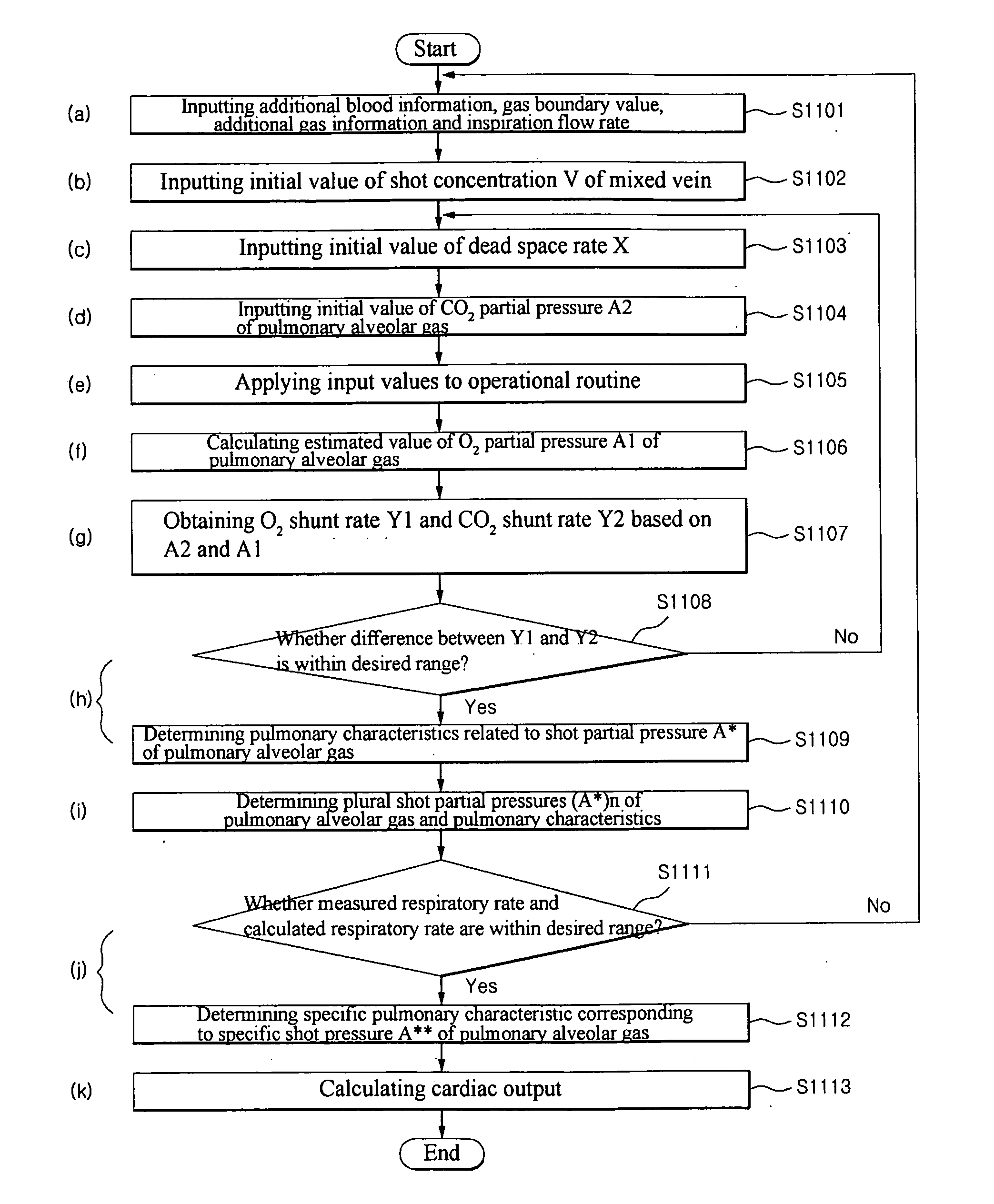Method and display apparatus for non-invasively determining pulmonary characteristics by measuring breath gas and blood gas
a technology of breath gas and pulmonary characteristics, which is applied in the field of non-invasive pulmonary characteristics determination by breath gas and blood gas measurement, can solve the problems of poor prediction accuracy, pain and danger in patients, and inability to achiev
- Summary
- Abstract
- Description
- Claims
- Application Information
AI Technical Summary
Benefits of technology
Problems solved by technology
Method used
Image
Examples
Embodiment Construction
[0057]All terms including technical and scientific terms used herein have generally the same meaning as commonly understood by those skilled in the art, however optionally, are otherwise defined by the present applicant. In this case, the specified terms are described in detail in the disclosure and must be interpreted as having alternative meaning different from that in the context of the relevant art.
[0058]Hereinafter, preferred embodiments of the present invention to achieve the purposes described above will be described in detail with reference to the accompanying drawings, which are only given for the purpose of illustration and are not to be construed as limiting the scope of the invention. Therefore, it will be understood by those skilled in the art that various modifications and variations including technical spirits of the present invention may be made therein without departing from the scope of the present invention.
[0059]Referring to FIG. 1, blood circulation in a human b...
PUM
 Login to View More
Login to View More Abstract
Description
Claims
Application Information
 Login to View More
Login to View More - R&D
- Intellectual Property
- Life Sciences
- Materials
- Tech Scout
- Unparalleled Data Quality
- Higher Quality Content
- 60% Fewer Hallucinations
Browse by: Latest US Patents, China's latest patents, Technical Efficacy Thesaurus, Application Domain, Technology Topic, Popular Technical Reports.
© 2025 PatSnap. All rights reserved.Legal|Privacy policy|Modern Slavery Act Transparency Statement|Sitemap|About US| Contact US: help@patsnap.com



